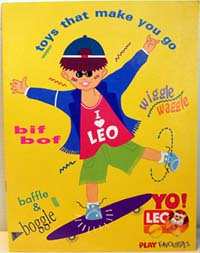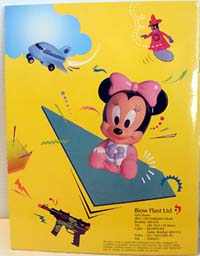India Catalogs & Advertisements
| India Dealer Catalogs Menu | ||
|---|---|---|
| Dealers | Collectors | Advertisements |
| Click on a BP image for larger images and more details | ||
| LEO MATTEL (1986 - 2000) |
|---|
| MATTEL TOYS (INDIA) PVT. LTD. (2000 - current) |
|---|
| 20?? Dealer Catalog | |
|---|---|
19?? Dealer Catalog
|
|


|
|
| The | |
| LEO MATTEL History - (1986 - 2000) | |
|---|---|
|
Mattel entered the Indian market in 1986-1987 in hopes of conquering the Indian toy market.
The Indian foreign trade laws, however, did not favor the presence of a multinational company
like Mattel. India’s foreign trade policy severely limited importation and foreign direct investments,
making it immensely difficult for multinationals to conduct business in India until 1991.
The foreign companies or investors in India were unwelcome as a result of a long-standing
national policy of economic self-reliance, a legacy of India’s independence from the British crown
in 1947.
Foreign direct investment was limited under the Foreign Exchange Regulation Act (FERA). FERA mandated that all companies holding more than 40 percent equity in an Indian subsidiary register themselves under FERA. Companies registered under FERA ultimately were forced to dilute their shares to 40 percent in order to transform the business into an Indian company. Companies that failed to register under FERA or refused to dilute their shares were forced to shut down business in India. In order to avoid classification as a FERA company, Mattel chose to enter into a joint venture with an Indian marketing company Blow Plast, Inc. and created an Indian affiliate, known as Leo Mattel, or Leo Toys. Because of the 41 percent ceiling on foreign direct investment (FDI), Blow Plast held 60 percent and Mattel held the other 40 percent. Scince Mattel stayed below the FDI ceiling by creating Leo Mattel, it was then not subject to classification as a FERA company. Leo Mattel was afforded the same national treatment as an Indian company. National treatment, however, did not mean the luxury of freely importing raw materials from China or elsewhere. Foreign direct investments and the corporate law of India did not cause Mattel problems just yet. The QRs, however, were still in place and prevented Mattel from using its preexisting production facilities in neighboring Asian countries, like China and Japan. Hands tied by the restrictive import laws, Leo Mattel set up a factory in Mumbai and a production facility nearby in Nagpur. Mattel maintained the Leo Mattel joint venture for the majority of the 1990s. In July 1991, thanks to the lift in import restrictions, Mattel was finally able to import the principal materials it needed. However it was not until Mattel ended its joint venture with Blow Plast, and thus ended the era of Leo Mattel, that Mattel took advantage of the new ceiling on foreign direct investment. By 2000, Mattel terminated the joint venture on the grounds that Blow Plast failed to meet Mattel’s quality standards. |
| MATTEL INDIA History - (2000 - 2010) | |
|---|---|
| After Mattel terminated the LEO joint venture, Mattel incorporated as Mattel Toys (India) Private Limited. Mattel, Inc. having a 51 percent ownership of Mattel Toys (India) Pvt. Ltd. |
![]()
Home | FAQ | Site Map | Links | Sell-Trade | | Search
Copyright © 2015
www.HWRedlines.com
All rights reserved.
The pictures and descriptions on this site may not be reused without obtaining prior permission.
Hot Wheels are a registered Trademark of Mattel Inc. This site is
not affiliated with Mattel Inc. in any way.


